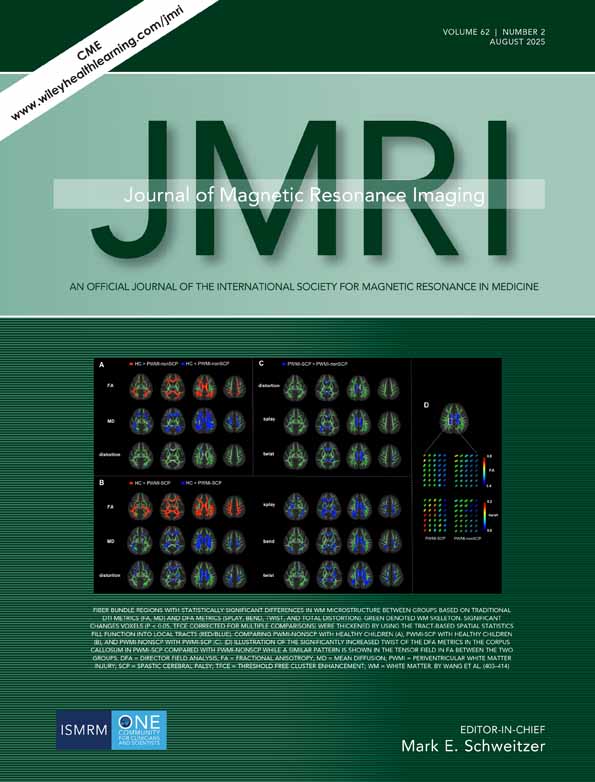Detection of primary breast cancer in women with known adenocarcinoma metastatic to the axilla: Use of MRI after negative clinical and mammographic examination
Abstract
The purpose of this study was to evaluate the ability of MRI to identify a primary site of malignancy in the breast of patients who present clinically with ipsilateral lymph nodes containing metastatic carcinoma but whose physical and mammographic examination are negative. MRI of the breast was performed on four patients using a variety of imaging parameters, all with and without gadolinium contrast. All patients had biopsy-proven adenocarcinoma of the ipsilateral axilla, with negative physical and mammographic examinations. Foci of enhancement assessed visually on precontrast and postcontrast scans (n = 1) and on substraction studies (n = 3) were considered suspicious under the clinical circumstances defined for this study. Lesions identified on MRI were re-identified on ultrasound examination and either preoperative localization for excisional biopsy or tissue sampling was performed. Surgery was performed and histopathologic correlation was obtained in all cases. Primary sites of breast carcinoma were identified in all four patients, with multiple sites of malignancy identified in three of four patients. Breast conservation therapy was made possible for three of four patients based on the results of the MRI study showing sites of malignancy and no features of cancer elsewhere in the breast. Follow-up data of 1, 2, and 5 years of these patients show no evidence of recurrent disease. MRI of the breast is a useful technique for identifying primary sites of malignancy in patients presenting with ipsilateral lymph nodes positive for metastatic adenocarcinoma when the physical and mammographic examinations are negative.




